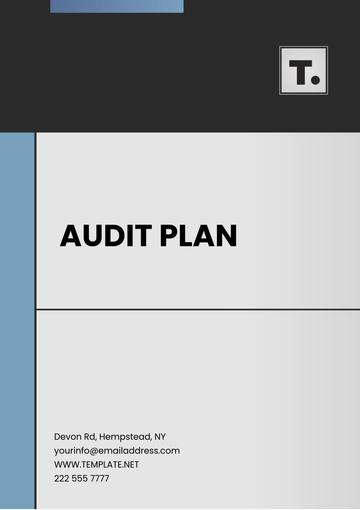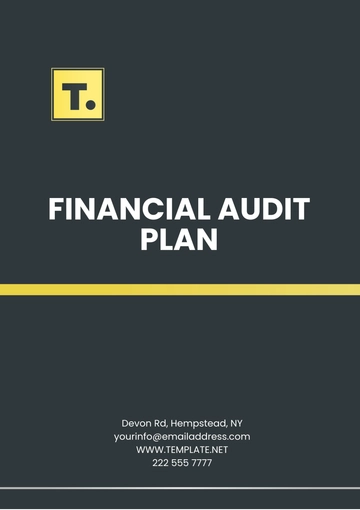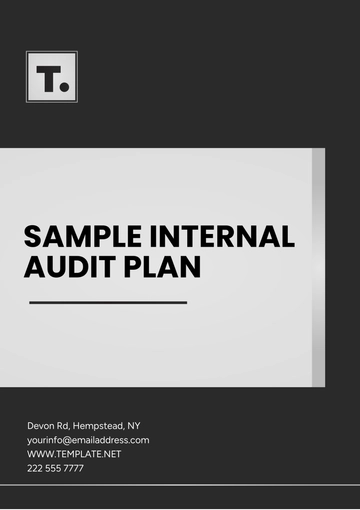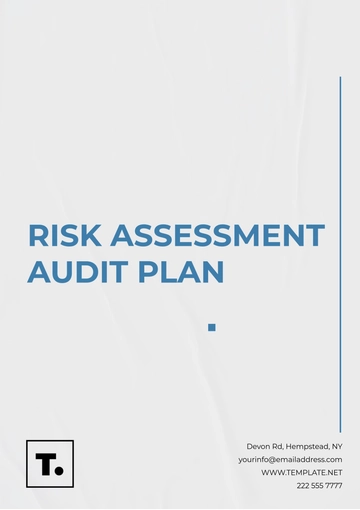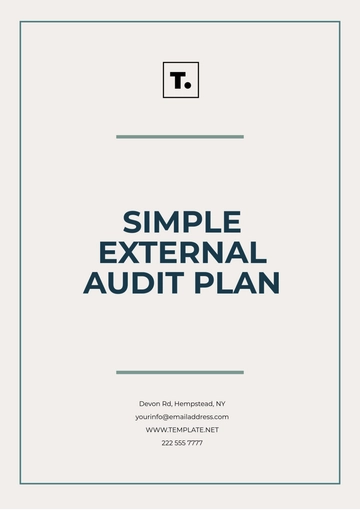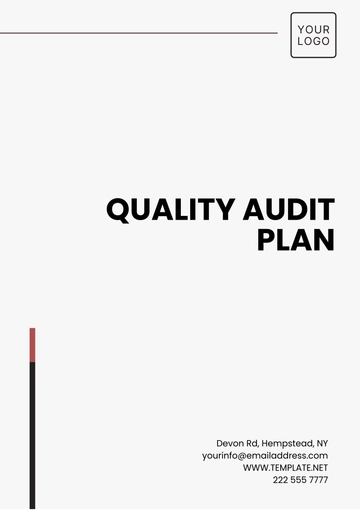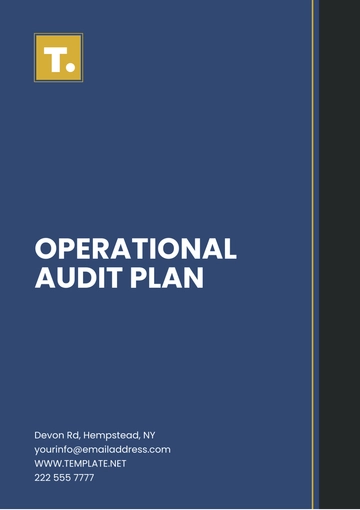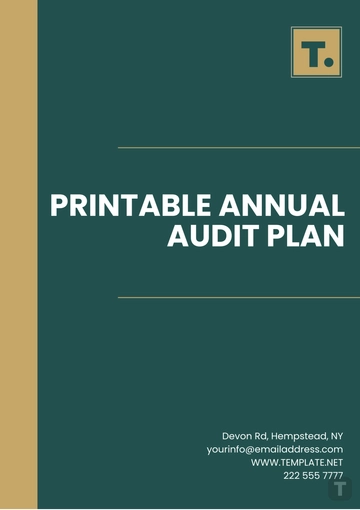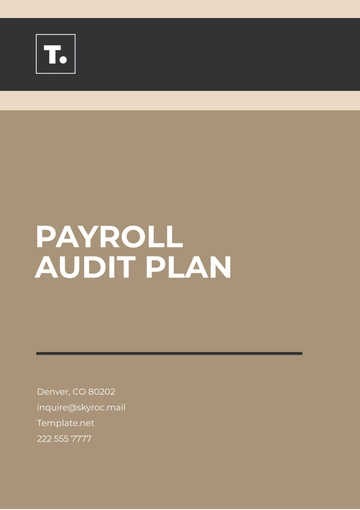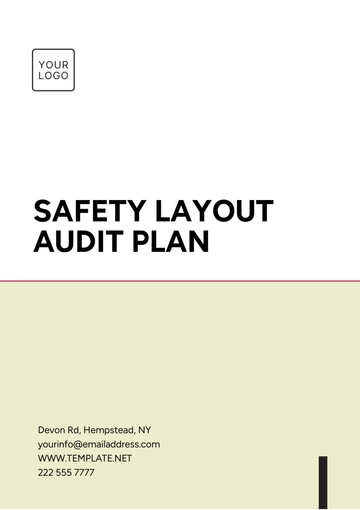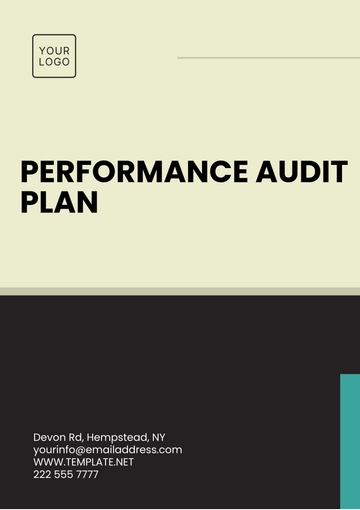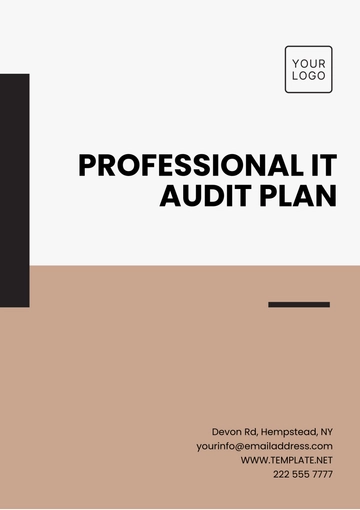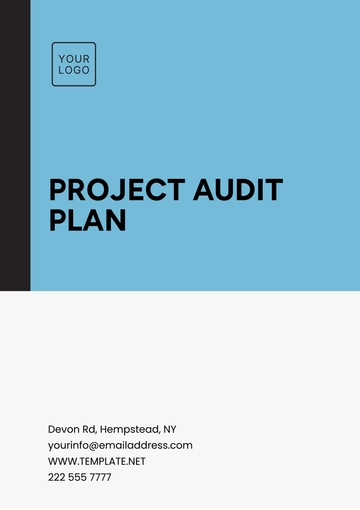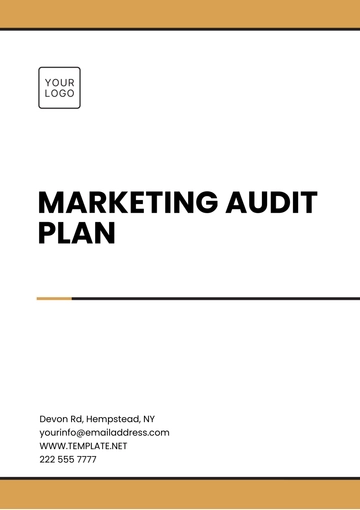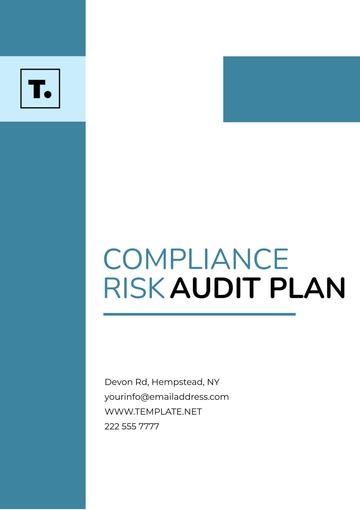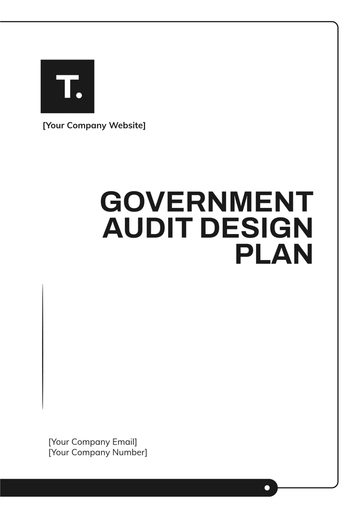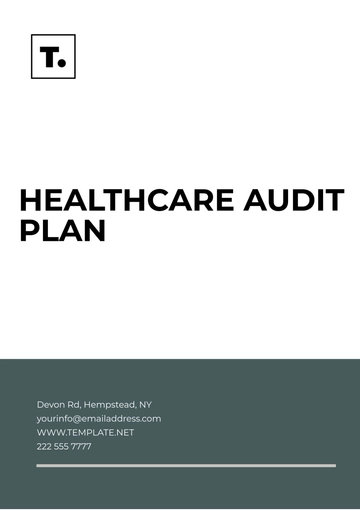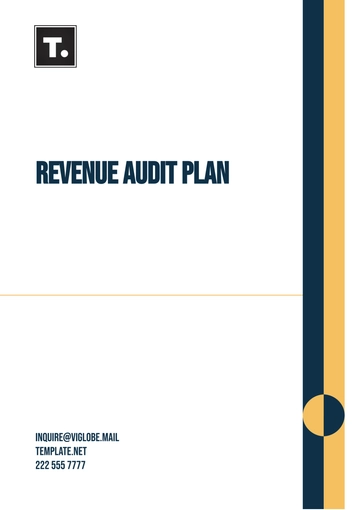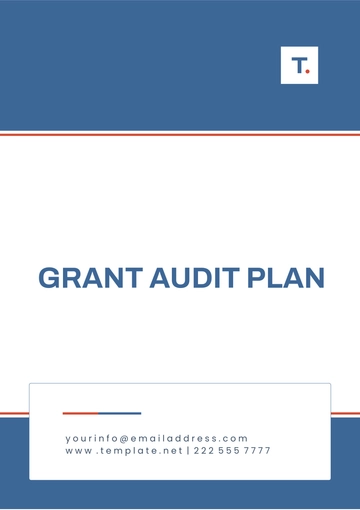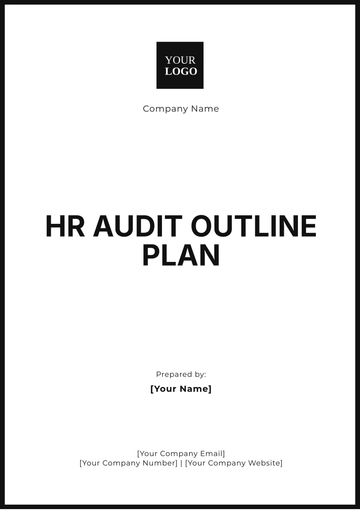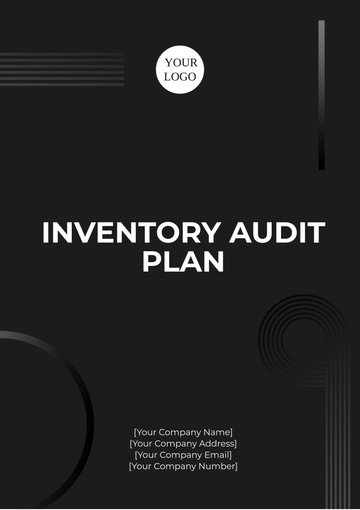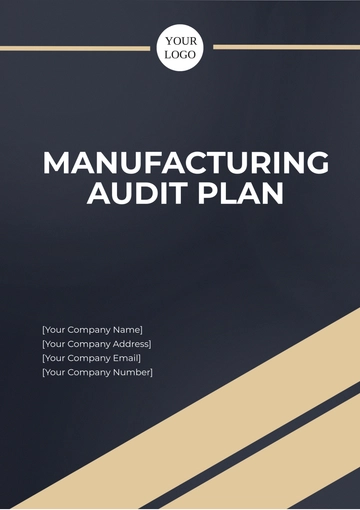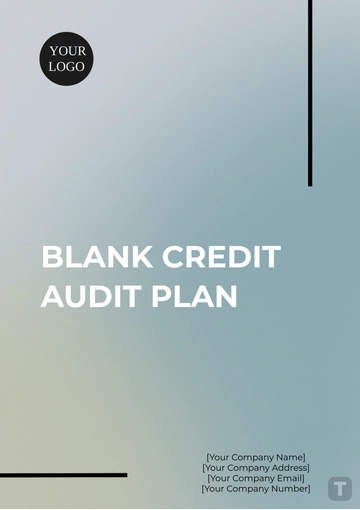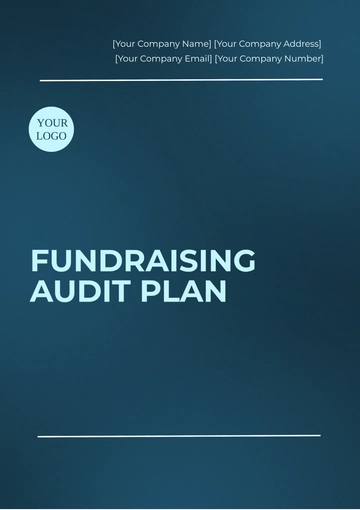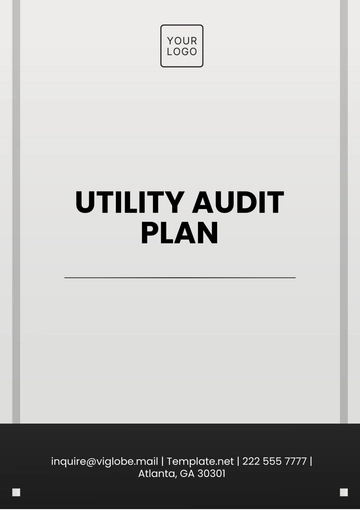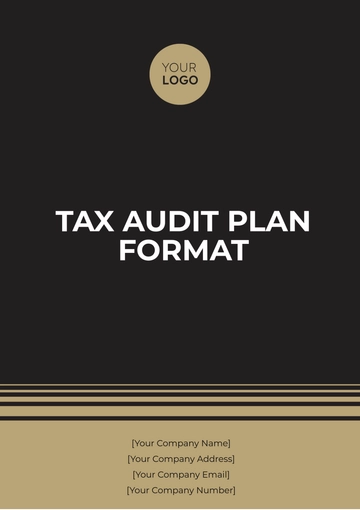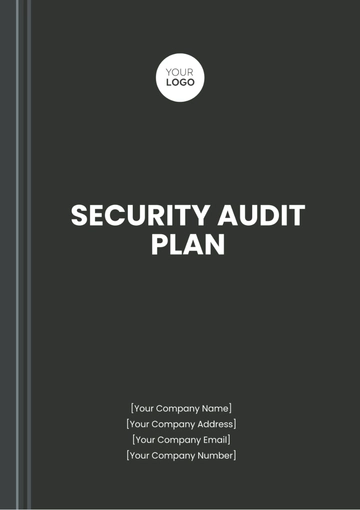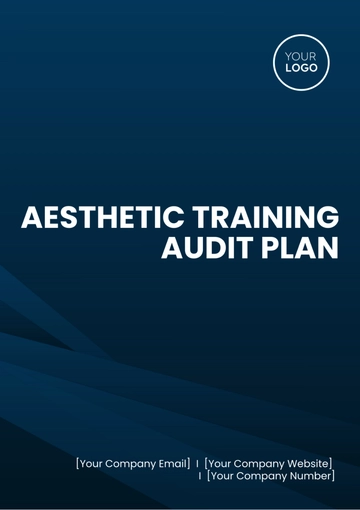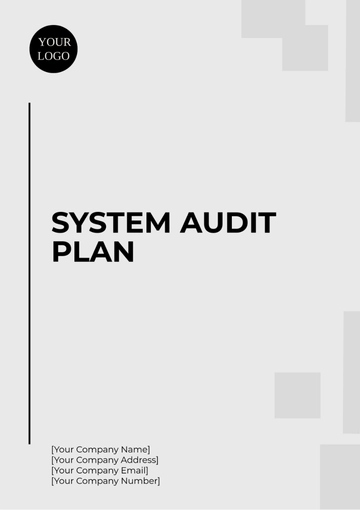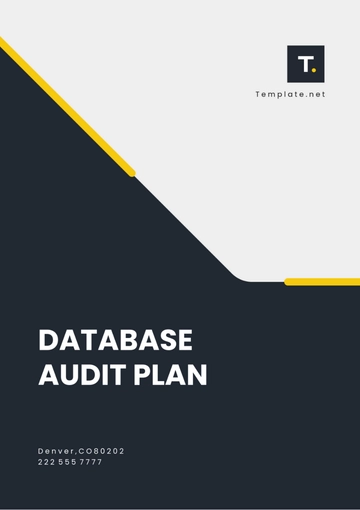Free Internal Audit Plan Brief
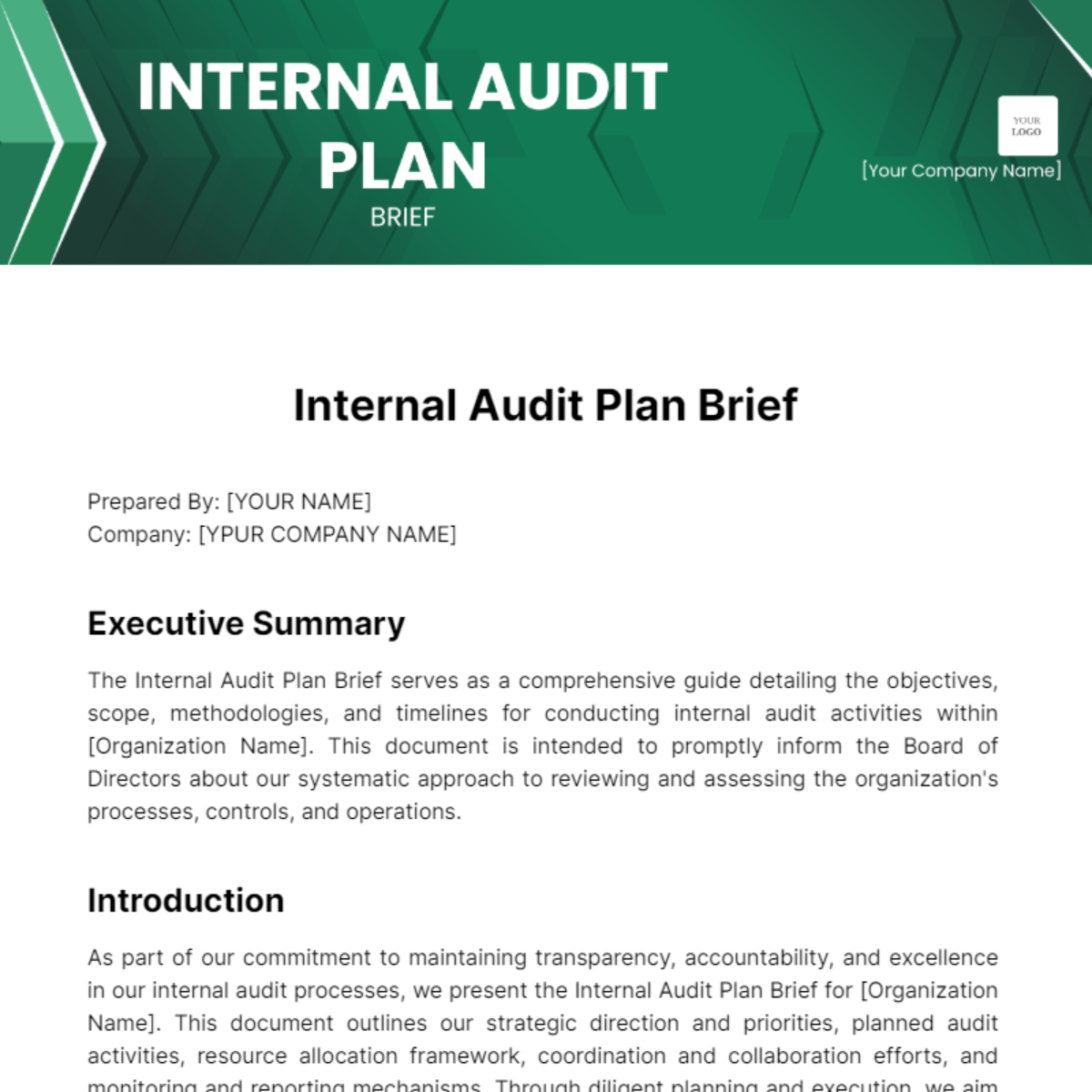
Prepared By: [YOUR NAME]
Company: [YPUR COMPANY NAME]
Executive Summary
The Internal Audit Plan Brief serves as a comprehensive guide detailing the objectives, scope, methodologies, and timelines for conducting internal audit activities within [Organization Name]. This document is intended to promptly inform the Board of Directors about our systematic approach to reviewing and assessing the organization's processes, controls, and operations.
Introduction
As part of our commitment to maintaining transparency, accountability, and excellence in our internal audit processes, we present the Internal Audit Plan Brief for [Organization Name]. This document outlines our strategic direction and priorities, planned audit activities, resource allocation framework, coordination and collaboration efforts, and monitoring and reporting mechanisms. Through diligent planning and execution, we aim to enhance organizational effectiveness, mitigate risks, and safeguard assets.
Strategic Direction and Priorities
At [Organization Name], our internal audit activities are strategically directed to align with our overarching objectives, mitigate risks, and ensure compliance with regulatory requirements. Our focus areas have been meticulously chosen to address key facets crucial for organizational success and adherence to industry standards and best practices.
1. Financial Integrity and Controls: Ensuring the integrity of financial reporting processes and controls remains a top priority. Our audits will scrutinize financial transactions, accounting practices, and internal controls to safeguard assets and maintain accurate financial records.
2. Operational Efficiency: We are committed to enhancing operational efficiency across all departments. Our audits will assess the effectiveness of operational processes, identify bottlenecks, and recommend improvements to streamline workflows and optimize resource utilization.
3. Risk Management: Mitigating risks is integral to safeguarding our organization's reputation and sustainability. Our audits will focus on evaluating risk management practices, assessing the effectiveness of risk mitigation strategies, and identifying emerging risks that could impact organizational objectives.
4. Regulatory Compliance: Compliance with regulatory requirements is non-negotiable. Our audits will ensure that [Organization Name] adheres to all applicable laws, regulations, and industry standards, minimizing legal and regulatory risks while promoting a culture of compliance.
5. Information Technology Governance: With the increasing reliance on technology, ensuring robust IT governance is paramount. Our audits will evaluate IT infrastructure, data security measures, and IT governance frameworks to mitigate cyber threats and ensure the confidentiality, integrity, and availability of information assets.
6. Governance and Ethics: Upholding high standards of governance and ethics is fundamental to our organizational culture. Our audits will assess governance structures, ethical practices, and adherence to internal policies and procedures, fostering accountability and integrity at all levels.
Planned Audit Activities
Our planned audit activities encompass a comprehensive review of key processes, controls, and operations within [Organization Name]. We will conduct audits in the following specific areas:
Financial Management:
Examination of financial reporting processes and compliance with accounting standards.
Evaluation of internal controls related to financial transactions, including cash management and reconciliation procedures.
Human Resources:
Review of HR policies and procedures to ensure compliance with labor laws and regulations.
Assessment of recruitment, training, and performance evaluation processes to optimize workforce management.
Information Technology:
Audit of IT infrastructure, including network security protocols and data backup procedures.
Evaluation of IT governance practices to mitigate cybersecurity risks and ensure data integrity.
Supply Chain Management:
Analysis of procurement processes to identify opportunities for cost savings and vendor risk management.
Assessment of inventory management systems to optimize supply chain efficiency and reduce operational disruptions.
Operational Processes:
Examination of key operational processes to identify bottlenecks and streamline workflows.
Evaluation of quality control measures to enhance product/service delivery and customer satisfaction.
Resource Allocation Framework
To effectively support the execution of internal audit engagements, we have established a comprehensive resource allocation framework tailored to the unique needs and requirements of [Organization Name]. This framework ensures that the necessary resources, including staffing, budgetary considerations, and technological infrastructure, are allocated optimally to each audit engagement, thereby enabling our audit teams to conduct thorough and effective reviews.
Staffing Allocation: Our staffing allocation process involves assigning skilled and experienced auditors to each audit engagement based on their expertise, knowledge, and availability. We consider factors such as the complexity of the audit, specialized skills required, and workload distribution to ensure that audit teams are adequately resourced to fulfill their responsibilities effectively. Additionally, we promote cross-functional collaboration and knowledge sharing to leverage the diverse expertise within our audit team.
Budgetary Considerations: Budgetary considerations play a crucial role in determining the scope and depth of our audit activities. We allocate budgets based on the size and complexity of the auditable areas, anticipated resource requirements, and potential risks identified during the planning phase. Our budget allocation process is guided by principles of cost-effectiveness and prudent financial management, ensuring that resources are utilized efficiently to achieve audit objectives without compromising quality or integrity.
Technological Infrastructure: A robust technological infrastructure is essential to support our audit engagements, facilitate data analysis, and enhance audit efficiency. We invest in advanced audit tools, software solutions, and IT systems to streamline audit processes, automate repetitive tasks, and facilitate data extraction and analysis. Our technological infrastructure enables auditors to access relevant information securely, identify patterns and anomalies, and derive valuable insights to inform audit findings and recommendations.
Coordination and Collaboration
Ensuring effective coordination and collaboration between internal audit teams and other departments or functions within the organization is imperative to the success of our audit initiatives. To achieve this, we will:
Stakeholder Engagement: Actively engage with stakeholders across various departments to understand their perspectives, concerns, and priorities. By soliciting input and feedback from key stakeholders, we can tailor our audit approach to address specific organizational needs and objectives.
Open Communication Channels: Foster open and transparent communication channels to facilitate the exchange of information and ideas between internal audit teams and other departments. Regular meetings, email updates, and interactive platforms will be utilized to ensure all stakeholders are informed and involved throughout the audit process.
Collaborative Approach: Adopt a collaborative approach to audit engagements by working closely with stakeholders to identify areas of mutual interest and concern. By involving relevant departments in the audit planning and execution phases, we can leverage their expertise and insights to enhance the effectiveness and relevance of our audit activities.
Knowledge Sharing: Promote knowledge sharing and best practices exchange among internal audit teams and other departments. By sharing lessons learned, successful strategies, and emerging trends, we can foster a culture of continuous improvement and innovation across the organization.
Synergy Leveraging: Identify opportunities to leverage synergies between internal audit activities and other organizational initiatives or projects. By aligning our audit objectives with broader strategic objectives and initiatives, we can maximize the impact of our audit efforts and contribute to overall organizational success.
Monitoring and Reporting Mechanisms
Our monitoring and reporting mechanisms are designed to ensure effective oversight and communication throughout the audit process. Key components of these mechanisms include:
Progress Tracking: We utilize a centralized system to track the progress of audit engagements in real time. This system allows us to monitor milestones, identify potential delays, and take proactive measures to keep audits on schedule.
Timeliness Compliance: To ensure adherence to timelines, we implement regular checkpoints and review meetings throughout the audit lifecycle. These checkpoints enable us to assess progress, address any challenges or bottlenecks, and make adjustments as necessary to meet established deadlines.
Findings and Recommendations Reporting: Upon completion of each audit engagement, we prepare comprehensive reports detailing our findings, observations, and recommendations for improvement. These reports are submitted to senior management and governance bodies, providing them with valuable insights to support decision-making and risk management efforts.
Regular Updates: We believe in maintaining open lines of communication with stakeholders throughout the audit process. As such, we provide regular updates on audit progress, emerging issues, and anticipated timelines to ensure transparency and alignment with organizational goals.
Transparency and Accountability: Our monitoring and reporting mechanisms are underpinned by principles of transparency and accountability. We strive to ensure that all relevant stakeholders have access to timely and accurate information regarding audit activities, findings, and outcomes.
Continuous Improvement: We actively seek feedback from stakeholders to continuously improve our monitoring and reporting processes. By soliciting input and incorporating lessons learned from each audit cycle, we enhance the effectiveness and efficiency of our internal audit function.
- 100% Customizable, free editor
- Access 1 Million+ Templates, photo’s & graphics
- Download or share as a template
- Click and replace photos, graphics, text, backgrounds
- Resize, crop, AI write & more
- Access advanced editor
Introducing the Internal Audit Plan Brief Template from Template.net: your essential tool for meticulous auditing. This customizable and editable template streamlines internal audit planning, ensuring precision and efficiency. With our Ai Editor Tool, effortlessly tailor every detail to fit your organization's needs. Simplify audit planning and elevate your internal processes with ease, exclusively on Template.net.
You may also like
- Finance Plan
- Construction Plan
- Sales Plan
- Development Plan
- Career Plan
- Budget Plan
- HR Plan
- Education Plan
- Transition Plan
- Work Plan
- Training Plan
- Communication Plan
- Operation Plan
- Health And Safety Plan
- Strategy Plan
- Professional Development Plan
- Advertising Plan
- Risk Management Plan
- Restaurant Plan
- School Plan
- Nursing Home Patient Care Plan
- Nursing Care Plan
- Plan Event
- Startup Plan
- Social Media Plan
- Staffing Plan
- Annual Plan
- Content Plan
- Payment Plan
- Implementation Plan
- Hotel Plan
- Workout Plan
- Accounting Plan
- Campaign Plan
- Essay Plan
- 30 60 90 Day Plan
- Research Plan
- Recruitment Plan
- 90 Day Plan
- Quarterly Plan
- Emergency Plan
- 5 Year Plan
- Gym Plan
- Personal Plan
- IT and Software Plan
- Treatment Plan
- Real Estate Plan
- Law Firm Plan
- Healthcare Plan
- Improvement Plan
- Media Plan
- 5 Year Business Plan
- Learning Plan
- Marketing Campaign Plan
- Travel Agency Plan
- Cleaning Services Plan
- Interior Design Plan
- Performance Plan
- PR Plan
- Birth Plan
- Life Plan
- SEO Plan
- Disaster Recovery Plan
- Continuity Plan
- Launch Plan
- Legal Plan
- Behavior Plan
- Performance Improvement Plan
- Salon Plan
- Security Plan
- Security Management Plan
- Employee Development Plan
- Quality Plan
- Service Improvement Plan
- Growth Plan
- Incident Response Plan
- Basketball Plan
- Emergency Action Plan
- Product Launch Plan
- Spa Plan
- Employee Training Plan
- Data Analysis Plan
- Employee Action Plan
- Territory Plan
- Audit Plan
- Classroom Plan
- Activity Plan
- Parenting Plan
- Care Plan
- Project Execution Plan
- Exercise Plan
- Internship Plan
- Software Development Plan
- Continuous Improvement Plan
- Leave Plan
- 90 Day Sales Plan
- Advertising Agency Plan
- Employee Transition Plan
- Smart Action Plan
- Workplace Safety Plan
- Behavior Change Plan
- Contingency Plan
- Continuity of Operations Plan
- Health Plan
- Quality Control Plan
- Self Plan
- Sports Development Plan
- Change Management Plan
- Ecommerce Plan
- Personal Financial Plan
- Process Improvement Plan
- 30-60-90 Day Sales Plan
- Crisis Management Plan
- Engagement Plan
- Execution Plan
- Pandemic Plan
- Quality Assurance Plan
- Service Continuity Plan
- Agile Project Plan
- Fundraising Plan
- Job Transition Plan
- Asset Maintenance Plan
- Maintenance Plan
- Software Test Plan
- Staff Training and Development Plan
- 3 Year Plan
- Brand Activation Plan
- Release Plan
- Resource Plan
- Risk Mitigation Plan
- Teacher Plan
- 30 60 90 Day Plan for New Manager
- Food Safety Plan
- Food Truck Plan
- Hiring Plan
- Quality Management Plan
- Wellness Plan
- Behavior Intervention Plan
- Bonus Plan
- Investment Plan
- Maternity Leave Plan
- Pandemic Response Plan
- Succession Planning
- Coaching Plan
- Configuration Management Plan
- Remote Work Plan
- Self Care Plan
- Teaching Plan
- 100-Day Plan
- HACCP Plan
- Student Plan
- Sustainability Plan
- 30 60 90 Day Plan for Interview
- Access Plan
- Site Specific Safety Plan
